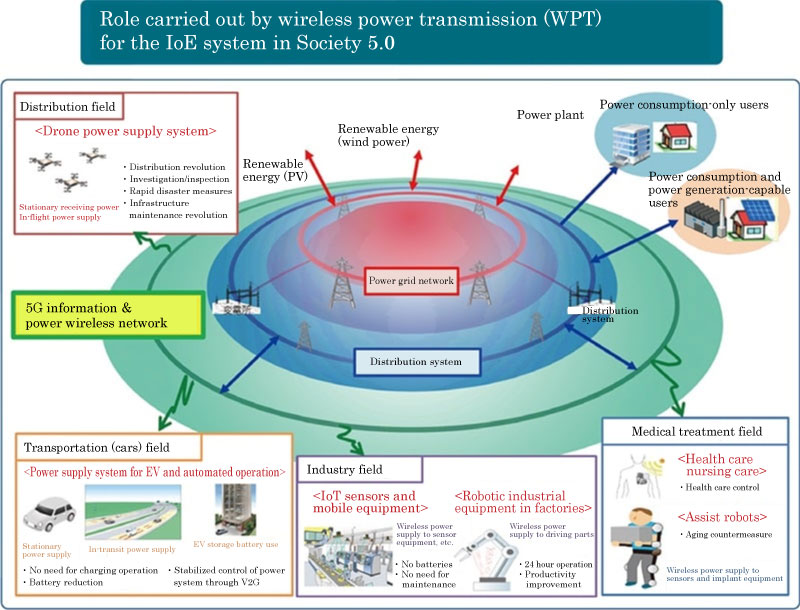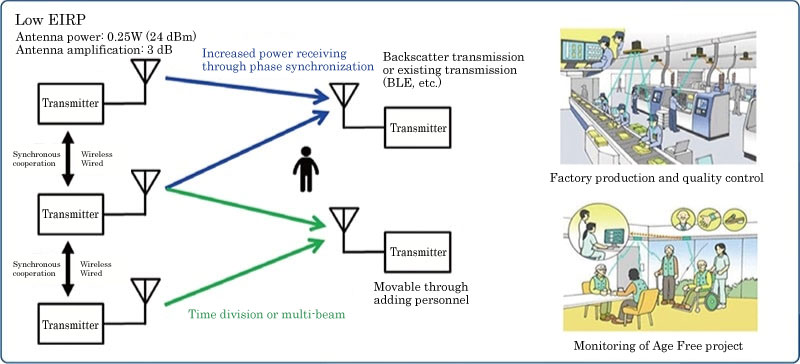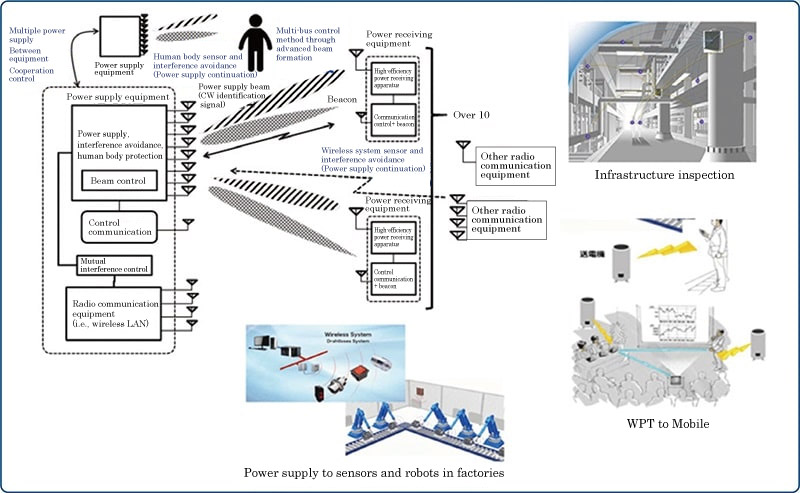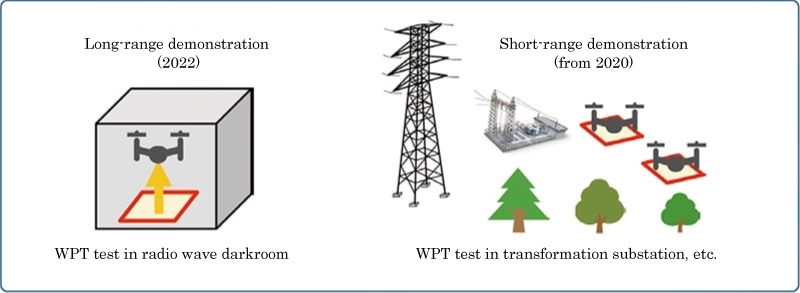Energy systems of an Internet of Energy(IoE) society
Theme C “R&D for application/practical implementation of IoE”
-

Sub-PD
Hiroki Shoki
Senior Expert, Toshiba Corporation
Background and Purpose
Demands in “Society 5.0” (super-smart society) are including “being the healthiest society in the world with the world’s top safety and peace of mind,” “being able to realize Energy to Everything (E2E) that efficiently and effectively supplies power to everything,” “being able to reduce CO2 emissions,” and “being able to strengthen power and societal infrastructure and stabilize lifelines,” and so on.
There are many solutions through WPT for these demands. For example, by supplying energy with a WPT system to everything, including EV, automated driving, robots, drones, and IoT sensors utilized in Society 5.0, it is possible to actualize a society that does not need to be conscious of charging and supplying power and also create further innovation.
In addition, by building wireless networks that integrate 5G (5th generation mobile communications system) information and electricity, it is possible to implement management systems for leading-edge power control and safe use.
Furthermore, with the progress of the spread of EVs due to realizing energy supply to in-motion EVs thfough WPT, expectations are possible such as for effective energy load reduction by making EV lightweight through battery capacity reduction as well as stabilization of grid power in the case of renewable energy increase by using EV storage batteries.
As for drones, the implementation of wireless power supplies will enable the reduction of social cost through maintenance innovation and contribute to the construction of a safe and reliable society through swift responses such as providing relief supplies during emergencies.
From the above, there are major expectations for implementation in society of WPT systems, and we are conducting R&D toward IoE application and implementation.

C-① WPT systems for sensor networks and mobile equipment
For WPT systems, conduct R&D on two power supply methods and common matters between them. Upon realizing this, offer the new concept of iTAF-WPT that reduces effects on the human body and other systems from the three dimensions of time, area, and frequency, and implement high power supply efficiency by realizing this. We work on the following two R&D themes in this research.
*Intelligent Time-Area-Frequency Control WPT (iTAF-WPT): technology with integrated control of time, area, and frequency. It realizes ensuring safety from radio wave exposure, coexistence with other wireless systems, and power transmission at maximum efficiency.
(1) Cooperative beam control method through distributed antennas
This method aims for wide-area electricity supply at the μW~mW level in order to realize battery-less and wireless environment sensors, distribution sensors, and biological sensors placed in great numbers in indoor spaces such as homes, factories, and nursing homes.

(2) Advanced beam forming method
This method aims for electricity supply at the level of several mW to W in order to realize electricity supply for mobile sensors, IoT sensors, information device charging, and sensors that move such as in factories.

C-② Drone WPT systems
As the population declines in Japan, it has become difficult to secure human resources engaging in maintenance and management of infrastructure, and therefore expectations are rising for drones, robots, etc. as an alternative method. In order to apply drones in actual fields, stabilized operation for long duration times is required and WPT systems are an important technology to support this. The research aims to develop a stationary short-range high power WPT system as well as an in-flight power supply control WPT system for drones. In addition to the developments of the highly efficient devices both for the transmitter and receiver, advanced transmission technology and equipment interference avoidance technology are the main issues for WPT systems. The receiver is also developed with the small-sized, lightweight, and high durability for installation in drones.
(1) R&D for the short-range, high power WPT systems when stationary
We will prepare drone ports above ground, etc., and develop wireless charging systems that utilize short-range WPT that charges batteries installed in drones when they are stationary.
The development worked on includes ① a system combining high capacity, lightweight energy transmitter and receiver parts, ② optimal drone port construction, and ③ an energy management system for a drone charging system. In addition, examination will be conducted for the magnetic field coupling WPT method and the electric field coupling WPT method, and the optimal use scenarios will be ascertained.

(2) R&D for the In-flight long-range, power supply control WPT system
We are developing a system transmitting power to receiver parts installed in drones that are flying through microwaves from power supply parts installed above ground, etc. We are working on development including for component technologies related to power supply parts, receiver parts, and beam controllers and a long-range power supply trial device (a scalable device) that combines these.

(3) Optimization and demonstration evaluation of WPT systems
We develop drone airframes for WPT demonstration tests, and implement and evaluate demonstration tests in accordance with development goals. We work on issues such as ① evaluation of the effects of electromagnetic waves on the drone airframe, ② design and development of drone airframes suitable for WPT systems through charging methods, circuit examination, etc., and ③ examination, implementation, and evaluation of demonstration tests responding to use cases for WPT systems for drones.

